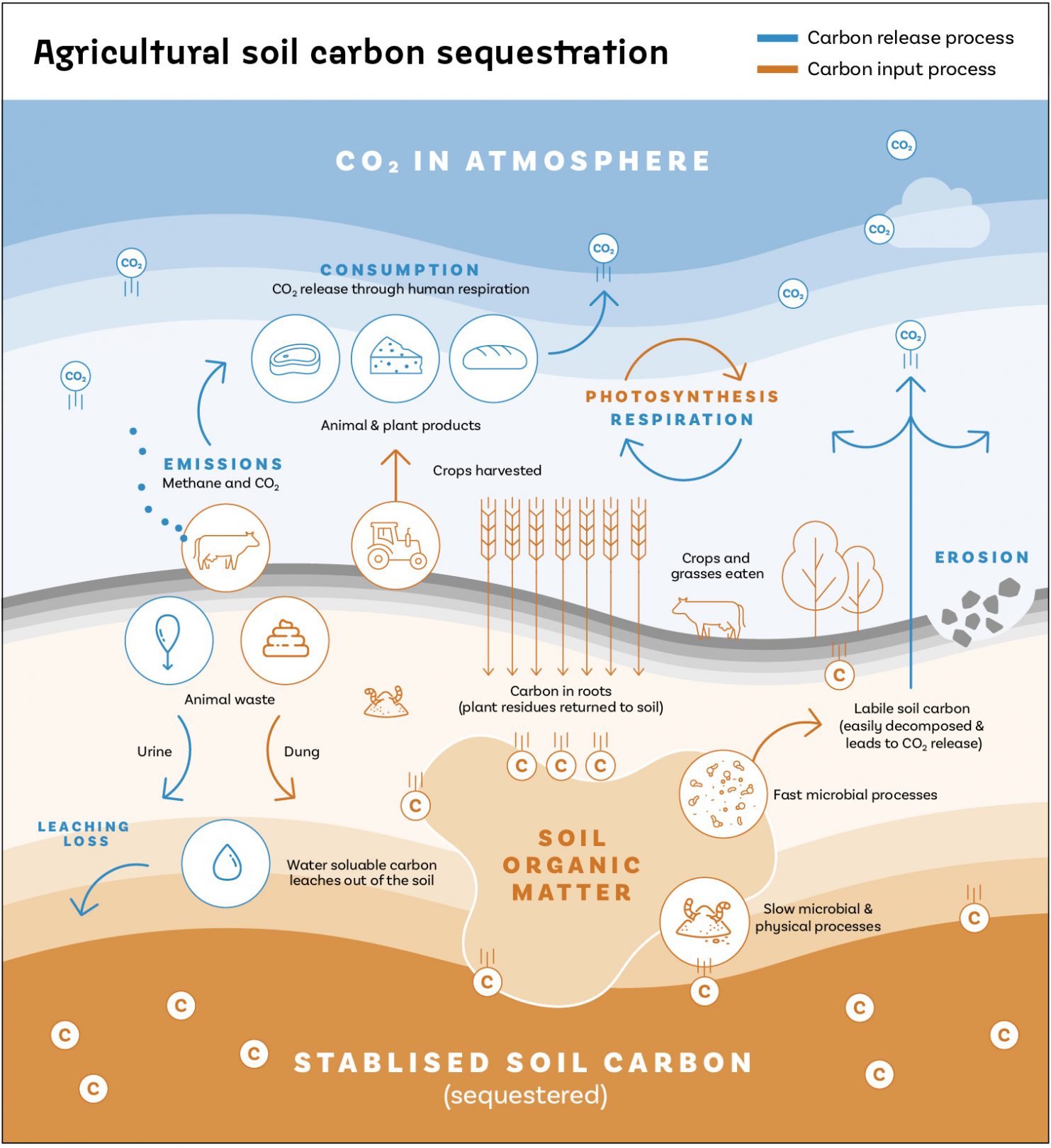More carbon is stored in soil than in the atmosphere and all plant life combined.
Soil carbon sequestration is the process in which carbon dioxide (CO2) is removed from the atmosphere by plants and stored in soils. Sequestering carbon in soils not only removes carbon dioxide from the atmosphere but can also improve soil health, potentially increasing agricultural yields and delivering ecosystem benefits — but what are the barriers to this technology becoming a widespread emissions reduction strategy?
Key Points
- Soil carbon has potential to contribute to an Australian negative emissions strategy by offsetting emissions from high emitting industries.
- Soil carbon sequestration was one of the initial 5 priorities in the Australian government’s emission reduction technology roadmap, with over $200 million set aside in the 2021-22 Federal Budget to improve and protect Australia’s soils.
- Unfortunately, the costs of measuring soil carbon change in some cases may exceed the returns generated by carbon credits for farmers, who may also face costs associated with a required change in land management. There is a clear need for low-cost, accurate technologies and methods to measure soil carbon.
- Improvements in the technology and methodology of soil carbon measurement, better understanding of the most effective sequestration practices for each region, and an improved market for Australian Carbon Credit Units (ACCUs), could see soil carbon abatement become a viable source of income for farmers as we move towards net zero emissions in Australia.








